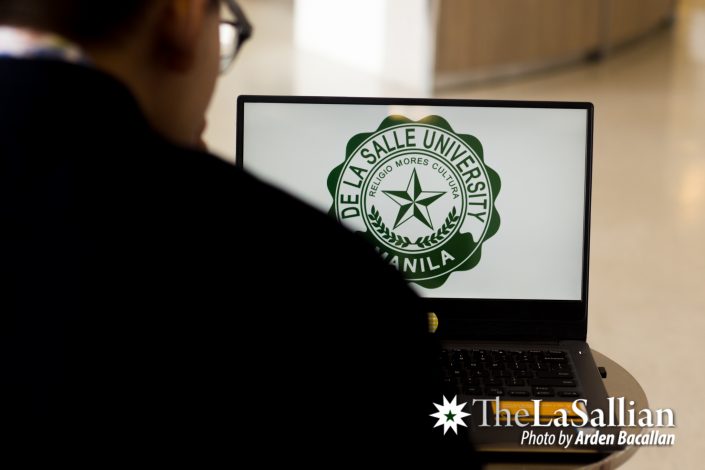
How much of an effect can a higher educational institution (HEI) have toward sustainable development? That is perhaps the question Times Higher Education (THE) had in mind when it ushered in the University Impact Rankings in 2019, which the publication claims are the “only global performance tables that assess universities against the United Nations’ (UN) Sustainable Development Goals (SDGs).” On the list’s inaugural year, DLSU found itself as the only Philippine institution to make the cut, garnering a place in the 301+ bracket. Two years later, the University remains a contender, sliding, however, to the 400-600 bracket. It also now shares the honor alongside five other Philippine educational institutions, namely Ateneo de Manila University, Mapua University, Tarlac Agricultural University, and the University of Santo Tomas.
But maintaining one’s spot on the list requires active participation, and for the past three years, DLSU has taken steps to retain its place among HEIs around the world.
SDG-based metrics
To enter the impact rankings, interested institutions must submit data on at least four UN SDG areas, one of which has to be SDG 17, which is Partnerships for the Goals. THE explains in their methodology that they made SDG 17 mandatory as it served as a “meta-SDG”: collaborating with other organizations, the magazine says, “highlights the cooperation and publishing aspect of the goals.” If a school applies for more than three SDGs, THE will only consider the three best performing ones.
THE then employs a series of metrics and indicators, which are aligned to the UN Targets for the SDGs, to determine the score of each institution. The applying university must submit evidence to meet these criteria.
Once the data is obtained, the ratings are then constructed based on the weighted average of the three highest SDGs, each of which is given a weight of 26 percent, and SDG 17, which is given a weight of 22 percent.
Quality Assurance Office Director Dr. Gerardo Largoza notes that the whole process is straightforward: “The questionnaire basically dictates the measures. And, in response, you just provide the best possible material.”
Arriving at which SDGs to submit for, however, was not as simple.
“It’s not so much a question of ‘What are the best things that the University did over the last two years?’” Largoza comments. “It’s really…‘Which of our activities have had the greatest national/international impact with corresponding evidence to validate it?”
A document provided by Largoza to The LaSallian shows the three SDGs aside from SDG 17 that DLSU had performed best: SDG 6, or Clean Water and Sanitation; SDG 14, or Life Below Water; and SDG 16, or Peace, Justice and Strong Institutions.
For SDG 6, DLSU promoted its efforts to improve sewage treatment on campus and create guidelines on water conservation and management. The University also spotlighted its shore cleanup activities to enter SDG 14, while it noted the University Student Government’s constitutional revisions and DLSU’s voter education initiatives and KAMALAYAN forums to qualify for SDG 16.
Lastly, DLSU’s many linkages with non-governmental organizations, foreign embassies, and local government units were put front and center for SDG 17.
Years in the making
The University’s rise into the rankings has served as a validation of the social engagement initiatives that it has undertaken for years. When the UN first introduced the SDGs in 2015, DLSU responded by launching the SDG Localization Project in 2016 and later forming the Lasallian Social Enterprise for Economic Development.
“We have been very consistent in making SDGs our primary anchor and framework of our engagement efforts,” Vice President Lasallian Mission Fritzie De Vera tells The LaSallian. “We already localized SDGs in various local government units within the University community. We identify certain goals in the SDGs based on the needs of
the community.”
The introduction of the impact rankings, then, have allowed universities to be recognized for these efforts. Largoza asserts that this is advantageous as it aligns with how society’s views toward universities have also changed over the years. According to him, HEIs are no longer expected to simply “regurgitate old knowledge and to pass it on to a new generation” but rather to play a more active role in solving local problems and enacting societal change.
“The idea that we finally have an instrument that looks specifically at the activities of universities in contributing to the SDGs is valuable in itself,” he further remarks.
No ‘rankings fever’
While some universities may divert their resources to boost their placement, Largoza assures that no such “rankings fever” is shared among DLSU administrators.
“When we do things in the University, they are driven by our Mission [and] Vision, our core strategies,” he maintains, noting that any consequential improvement in the rankings is only an added benefit. “There’s a clear example of how an obsession with rankings can distort a university’s priorities—I can say with certainty that no such thing is happening at DLSU.”
However, Largoza notes that the rankings are still factored into the University’s internal targets as the school’s performance on the list helps “to expand our idea of the scope of activities that are considered important to society, to look for blind spots in our own activities, and to put pressure on us to faithfully document what we do.”
De Vera agrees with Largoza’s sentiments, highlighting that participating in these lists “gives us a better appreciation of how we make an impact to the community and the society in general.”
“Lasallian education is education for life: it is providing opportunities for personal transformation which will eventually lead to transformation of societies. THE Impact [Rankings] gives us an assessment of how we are doing in our mission and vision as a University,” she affirms.
